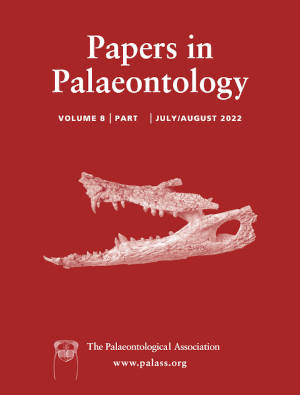Article: High diversity of siliceous sponges in Western Tethyan areas during the Eocene: palaeobiogeographical, ecological and taxonomic significance
Publication: Papers in Palaeontology
Volume:
8
Part:
1
Publication Date:
2022
Article number:
e1416
Author(s):
Magdalena Łukowiak, Andrzej Pisera, Tetiana Stefanska, and Vadym Stefanskyi
DOI:
10.1002/spp2.1416
Abstract
Abstract Porifera is a clade of globally distributed, early diverging metazoans that are important components of modern aquatic environments. Despite the fact that they were also abundant in the geological past, their fossil record is uneven. For example, little is known about sponge communities that inhabited the Tethyan areas during the Cenozoic. Here, we record an abundant and taxonomically diverse assemblage of middle–late Eocene sponges from east-central Ukraine. The material consists of preserved whole-body specimens as well as disassociated spicules. The taxonomic composition of this new assemblage, supplemented with previously published data obtained from sponge materials originating from the middle and upper Eocene of the East European Platform, documents a surprisingly rich sponge community that inhabited shallow waters (depths of 100 m) and comprised at least 30 demosponge species, including two new taxa, Paratetilla milanek Łukowiak and Theonella alexandriae Łukowiak, three hexactinellids and a single homoscleromorph. Additionally, we report the first fossil occurrence of Vetulina, a demosponge genus that currently is found near the Philippines and Australia and in the Caribbean Sea. Some of the sponge taxa recognized were previously noted from the upper Eocene of Australia and New Zealand. This is indicative of their wide distribution during the early Cenozoic and also shows that a non-interrupted connection existed between the western Tethyan and peri-Australian areas, explaining the patchy distribution of some sponge taxa in modern seas.
